Dee Estuary Birding
Monthly Newsletter...
November 2022 Newsletter
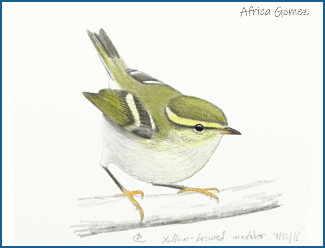
Curlew Sandpiper Influx 2022

September 2022 saw one of the biggest influxes of Curlew Sandpipers into the Dee Estuary this century. It started slowly with no birds recorded until one on August 27th at Oakenholt followed by singles at Hoylake and Burton Mere Wetlands (BMW) on the last day of that month. But then a fresh easterly wind started blowing and within a couple of days there were eight at Hilbre and seven at BMW, reaching 15 at the latter by September 5th. Numbers kept on increasing so that by the 11th there were 39 at BMW (a record high for that site) and the total for the estuary that day was 50. Numbers stayed high at BMW all the following week and there were still 11 there on the 18th. Five were at Oakenholt on the 25th but after that there were just ones and twos, mostly at BMW.

The past twelve years have been good for Curlew
Sandpipers and, as you can see from the bar chart, the two best years
were 2011 and 2022. Intriguingly, the weekly distribution for these two
influxes was quite different with a double peak in 2011 and only one
sharp peak this year.
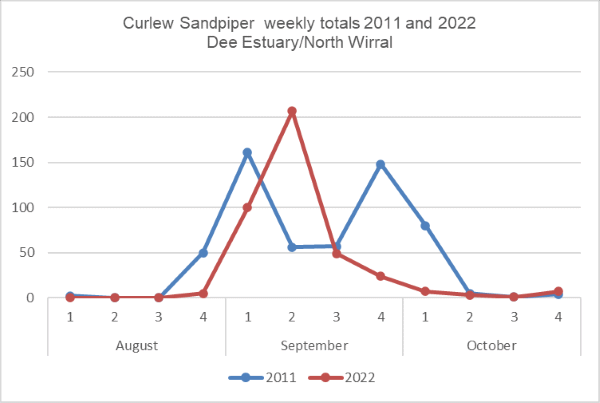
Most years it is very noticeable that the first
arrivals are found mostly on the coast with many at Hoylake as well as
at West Kirby and Hilbre. After a week or two more birds are found at
BMW and this is what happened in 2011 with the first peak consisting
mainly of birds around the coast whereas for the second peak more were
at
BMW. 2022 was different with a large number of Curlew Sandpipers found
at BMW throughout the passage and nearly 80% of records came from
there. This is illustrated in the two bar charts below.

Juvenile Curlew Sandpipers arrive here after
traveling west across the Arctic coast of Europe and down the
west coast of Norway or through the Baltic. We get large influxes here
both when there's been a good breeding season and also when a low
pressure system in the Baltic blows them westwards. Different weather
patterns may well account for the different weekly distributions above.
In 2011 there was a light south westerly wind here during the time when
the birds were arriving in late August and early September and it is
likely birds were arriving from the north having crossed westwards from
Norway to Scotland. They would then be traveling down the coast when
many arrived at Hoylake. Whether the same birds then made their way to
BMW after a couple of weeks or a second wave arrived from the east is
not clear. In 2022 there was only small numbers on the coast and it
would appear the strong east winds at that time blew birds westwards
across
the country rather than from the north and thus they ended up at the
east end of the estuary which is where BMW is. One reason for the build
up in numbers at BMW is that it is a good feeding area where birds tend
to linger for several days, whereas on the coast they are more likely
to pass through quickly.
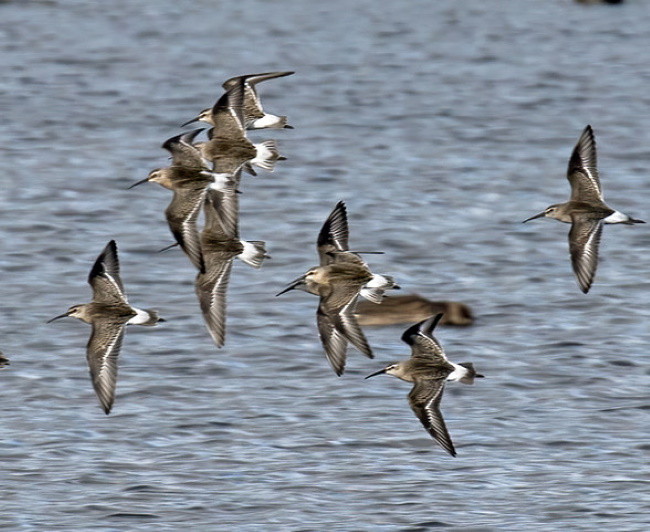
Historical Records
A delve into the old bird reports and bird books has revealed some fascinating records. Although not on the Dee Estuary I've included Frodsham Marsh in this search as that site traditionally was the best in our area for the second half of the 20th century:
The largest flock ever to be recorded on the
Dee Estuary appears to have been around Shotton Lagoons and the nearby
marshes in 1959. Like many old reports it's a bit vague on the exact
numbers present but I quote T. Hedley Bell "In certain years large
flocks appear......and in 1959 when between 100 and 200 were seen in
August and September at Shotton and the surrounding saltmarsh".
Every few years there is a major influx into the UK and 1969 was one of those years, thought to be the biggest ever at that time. On the Dee Estuary the birds were very localised being almost exclusively at West Kirby at high tide and Meols at low tide where they "frequented areas of very fluid black ooze". 55 at the end of August had increased to 100 by September 14th which was the peak count. Small numbers lingered at Meols right through to November. Just one or two were seen elsewhere that year.
Since the first Cheshire Bird Report was
published in 1964 there has never been a year when no Curlew Sandpipers
have been reported on the Dee Estuary. But there was only one in 1968,
at Meols, and just singles in 1986 and 1989.
The 1972 influx was very different and seemingly unprecedented! I can't find any reference to what happened anywhere except in the 1972 Cheshire Bird Report. What occurred was so unusual I would have thought it was worth at least a note in British Birds, but nothing. The influx started off with just ones and twos along the coast at the end of August, just like most years. But then:
Numbers then
snowballed at the Weaver Bend (Frodsham Marsh) where there were 111 on
29th and 170 on
31st. Unlike previous 'invasions' a high proportion of the birds were
adults, many with dregs of summer plumage and others in complete winter
plumage. Rapidly fluctuating numbers subsequently appeared throughout
September with 159 on September 9th and 80 on September 24th. Numbers
were so variable with changes to the ratios of young to adult, summer
to winter plumage
so marked that it was evident that the birds were moving through
rapidly.
Movement ceased abruptly at the end of the month.
There are several remarkable things about this
influx.
- The max count of 170 on August 31st is the highest ever recorded for Frodsham Marsh (and for the whole of Cheshire and Wirral) since the first Cheshire Bird Report in 1964.
- It was very local with only one or two Curlew Sandpipers recorded
elsewhere in Cheshire and Wirral. Nationally I've not been able to find
any indication of anything unusual. The Wetland Bird Survey for 1972
indicates a good passage nationally but nothing out of the ordinary.
- The most remarkable occurrence was the large numbers of adult birds. Read any report or article on Curlew Sandpipers in the UK and they all say the same thing: Small numbers of adults are recorded at the end of July and beginning of August whereas juveniles are first seen at the end of August and through September and October when adults are largely absent. Nobody ever says in some years good numbers of adults are also seen!
A look at old weather maps indicate a high pressure
system over the British Isles over the last 10 days of August 1972 with
low pressure over the Baltic which then intensified over the Black Sea.
Presumably there must have been a strong air flow from the south-east
which
diverted the birds from their normal migration route.
Winter records of Curlew Sandpipers are almost unheard of in this country but one or two do turn up occasionally including one at Meols on December 12th 1980. Records in March are also very unusual and presumably are birds returning early from Africa. Two were at Red Rocks on March 29th 1987 and one at Point of Ayr on March 6th 1992.
1988 saw another major influx into the country and was the subject of an article in British Birds (Sep 1989). September 10th saw the peak here with 134 at Frodsham Marsh, 50 at Point of Ayr and 45 at Heswall. 72 were at Heswall on September 14th.
1991 wasn't a major influx year but we did see the biggest flock ever recorded at Hilbre with 60 on September 9th.
Before the new sewage works was built at
Heswall the mud there seemed to be particularly attractive to Curlew
Sandpipers (better not ask what they were feeding on). 1996 saw large
numbers there throughout September and early October peaking at a very
high count of 108
on Sep 28th.
The migration in 2000 occurred early with
high numbers concentrated within a five day period from August 29th to
September 2nd. During this period 70 were at Frodsham Marsh, 33 at
Heswall, 30 at Hoylake and 25 at Parkgate.
More recent influxes have been detailed in
Newsletters on this website, referenced below.
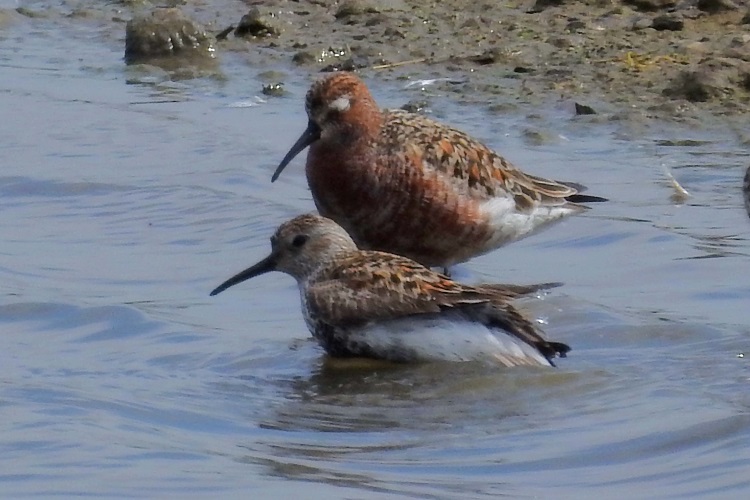
References
1. Latest Sightings, Dee Estuary Birding, http://www.deeestuary.co.uk/lsight.htm.
2. Hedley Bell, The Birds of Cheshire, 1962.
3. Cheshire and Cheshire & Wirral Bird Reports 1964 to present day.
4. Clywd and North-East Wales Bird Reports - various.
5. P.I. Stanley and C.D.T. Minton, The unprecedented westward migration of Curlew Sandpipers in autumn 1969, British Birds 65: Sept 1972.
6. J.S. Kirby, K.K. Kirby and S.J. Woolfall, Curlew Sandpipers in Britain and Ireland in autumn 1988, British Birds 82:9, 399-409.
7. Richard Smith, The Curlew Sandpiper Influx
(2011), http://www.deeestuary.co.uk/news1111.htm
8. Richard Smith, October 2013 Dee Estuary Birding
Newsletter, http://www.deeestuary.co.uk/news1013.htm#rarity.
9. Richard Smith, Curlew Sandpiper Influx 2016, http://www.deeestuary.co.uk/news1116.htm.
10. Richard Smith, October 2020 Dee Estuary Birding Newsletter, http://www.deeestuary.co.uk/news1020.htm#rarity.11. Metcheck website, https://www.metcheck.com.
Richard Smith
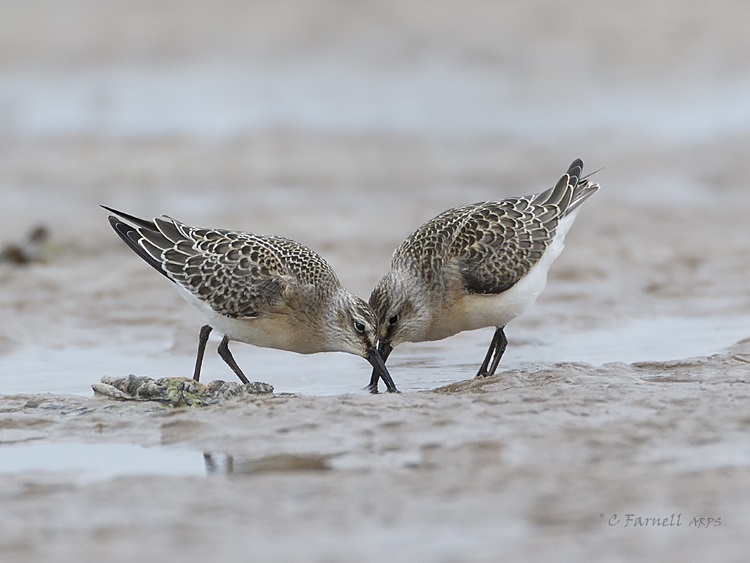
Colour Ring Report
Black-tailed Godwit
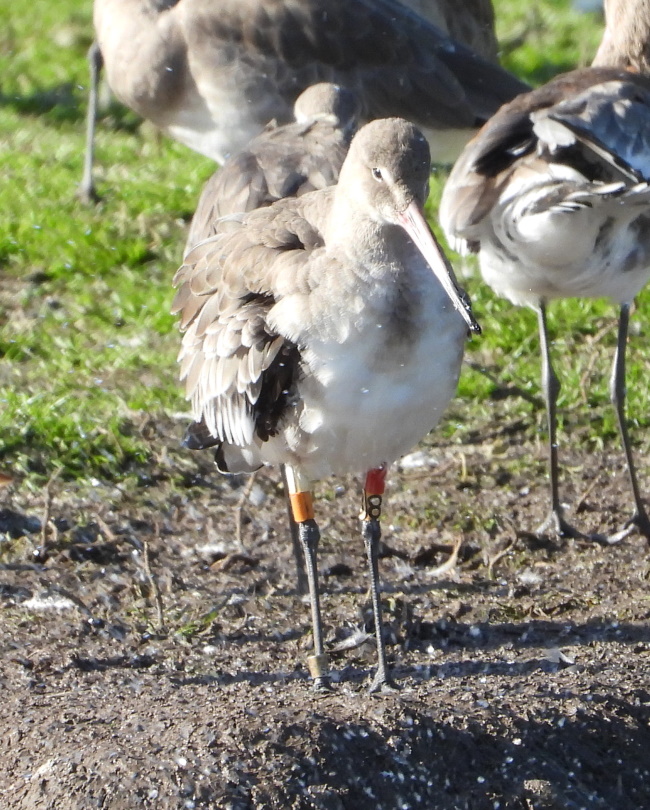
Black-tailed
Godwit R8-WO was ringed as an adult male on the north coast of Iceland
in July 2010. It's first sighting away from there was at Thurstaston
shore where it
stayed during the winter of 2010/11. After that it's travels reads like
a tour of some of the best nature reserves in the country having
visited Cley, Frampton Marsh, Minsmere, Snettisham, Titchwell and
Leighton Moss. But it is also a regular visitor to somebody's back
garden
close to where I live in Caldy (Caldy Wildfowl Collection)! Every year
it performs the same movement from Iceland to East Anglia (mostly north
Norfolk) where it undergoes post-breeding moult before flying westwards
to the Dee Estuary, and it always turns up around the second week in
October including in 2022. Having spent the winter here, and at various
Ribble Estuary sites, it then goes
up to Leighton Moss to moult into breeding plumage before flying back
to Iceland.
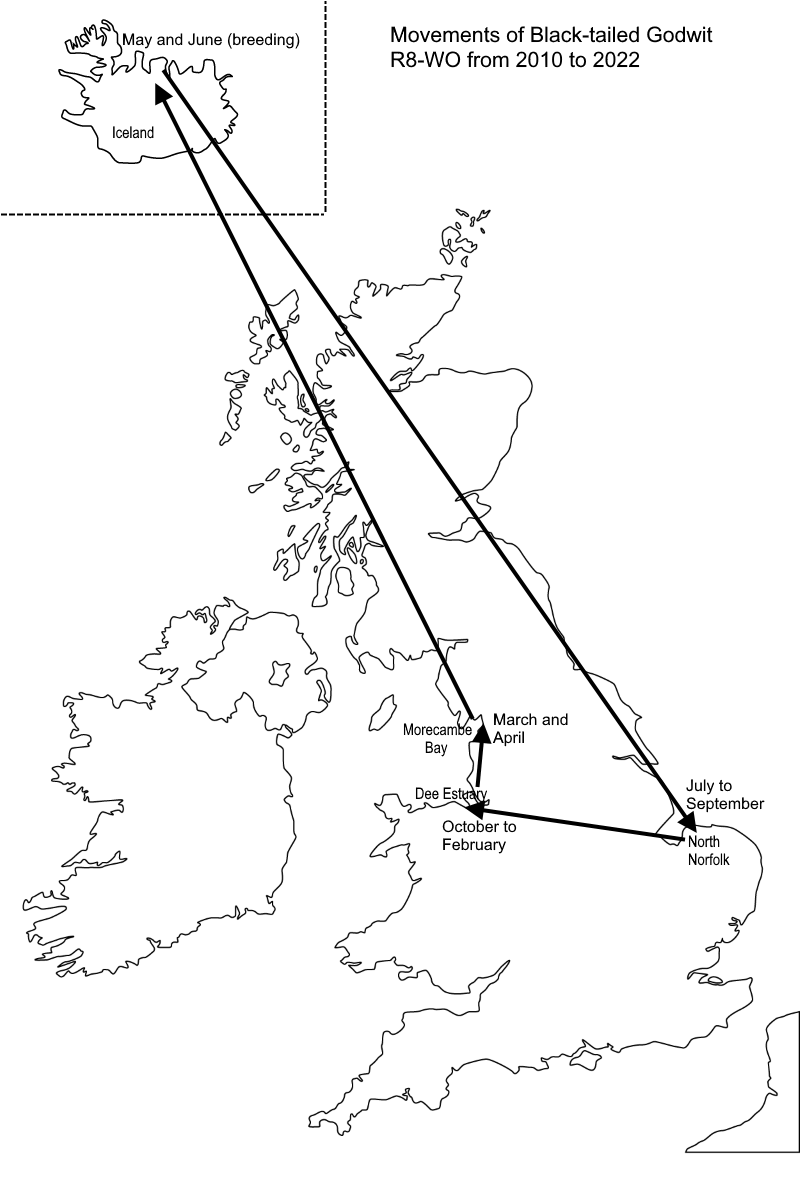
Grey Plovers
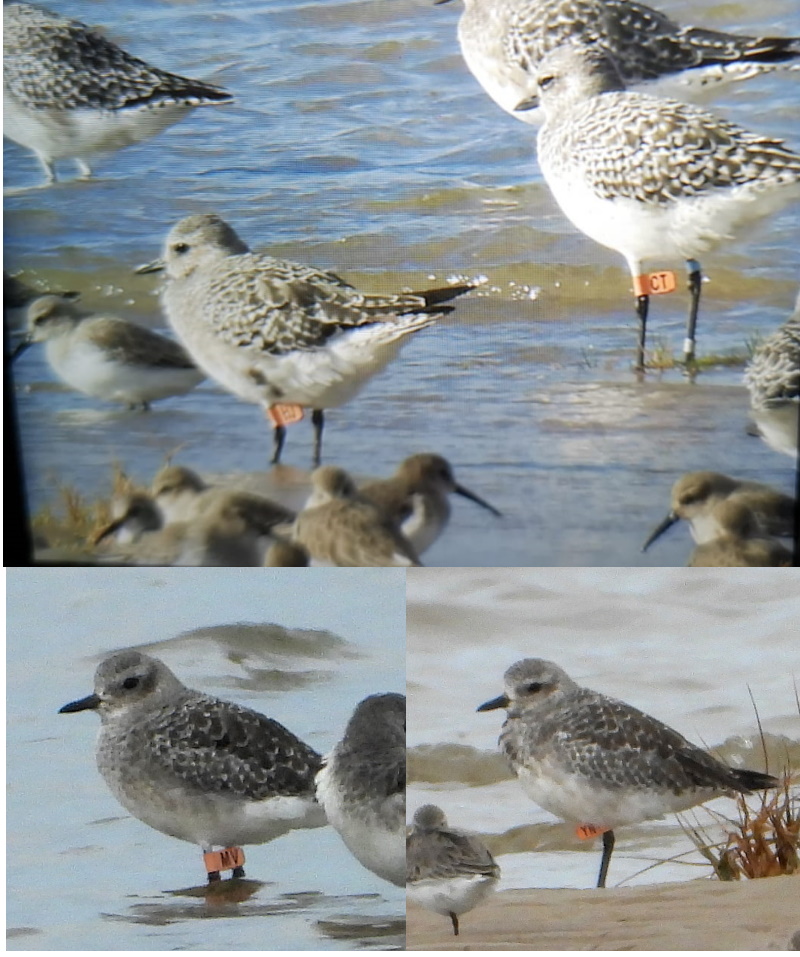
Top Oflags HJ and CT © Tony Ormond
Bottom Oflags MV and YN © Richard Smith
October was something of a Grey Plover bonanza for
us with 23 records of 16 birds, a record monthly total for us. One was
at Meols and another at West Kirby, but all the rest were at the high
tide roost at Hoylake with two sets of high tides when disturbance was
thankfully low. As can be seen from the photographs these all had
orange flags and were ringed at Altcar (southern end of Formby beach)
either in March 2018 or March 2019.
All records for these Grey Plovers come from the
Liverpool Bay Area from West Kirby up to Southport - which tells us how
site faithful they are. However, the graph below shows a marked
mid-winter dip thus illustrating that most of these flagged birds are
passage migrants rather than spending the winter here - although plenty
of Grey Plovers do.
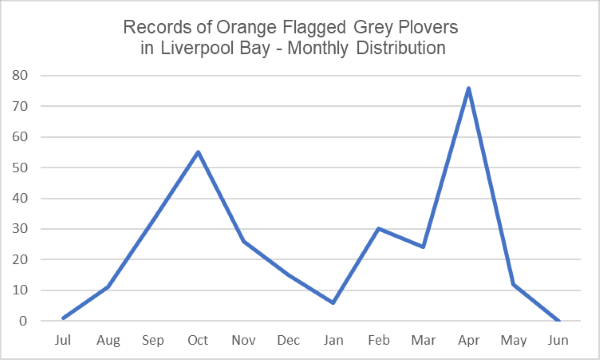
This autumn the orange flag records have been
showing that the Grey Plovers appear to have split into two with some
feeding off Heswall and Thurstaston at low tide and spending high tide
at Hoylake, whereas more are across on the Sefton coast - with no
apparent mixing of the two groups.
Oystercatchers
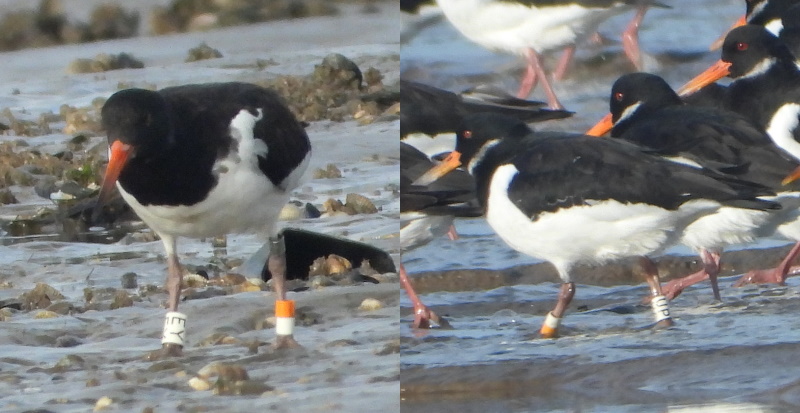
OW - W(EY) ringed on the Reykjanes Peninsula, SW
Iceland on 01/06/2022 as a chick.
Recorded at Thurstaston on 02/10/2022.
WO - W(UP) ringed on the Reykjanes Peninsula, SW
Iceland on 24/06/2021 as a chick.
Recorded at Seaforth on 21/04/2022 and at Hoylake on 25/10/2022.
Both these were ringed on the coast close to
Reykjavik International Airport. They are part of an ongoing study into
Icelandic Oystercatcher movements including how families disperse - so
finding two which were recently ringed as chicks has been an important
contribution to this work.
Turnstone
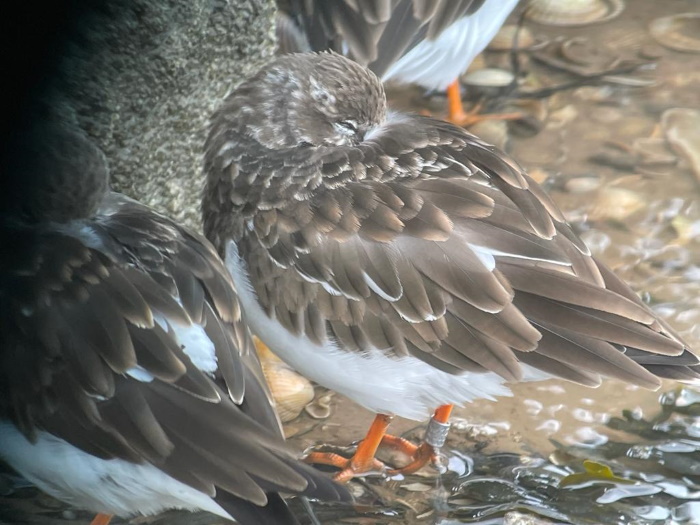
Metal Ring AT254613
The small flock of Turnstones which have been feeding and roosting at
the southern end
of West Kirby Marine Lake has proved productive since they returned in
the summer with birds found which were ringed in Canada, Norway
and on Hilbre. But
Richard Speechley did really well, after several days of trying, to
read the metal ring of this Turnstone ringed in Finland. This is the
first Finnish ringed Turnstone ever found on Merseyside or the Dee
Estuary.
Ringed on 19/08/2020 as a full grown juvenile on the island of Sappi
north-west of Luvia on the west coast of Finland.
Recorded at least three times at West Kirby through October 2022.
Herring Gull
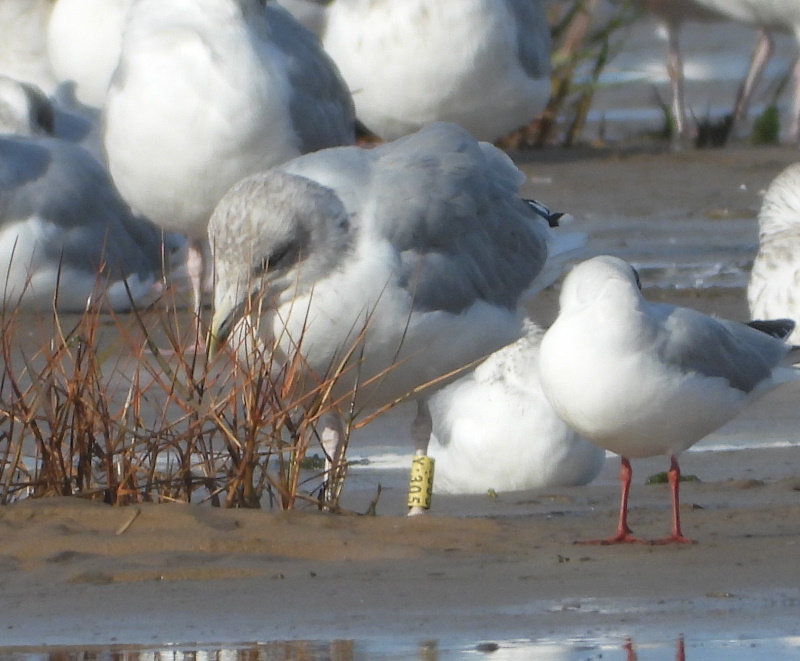
Yellow (Y:305)
Ringed on 26/02/2016 at Harewood Whin Landfill site near York.
Recorded:
Kimmel Bay, Conway, in March 2016.
Blaydon upon Tyne, Tyne and Wear, in July 2018 and February 2019.
Cotesbach Landfill Site, Leics, in January 2020.
Washington WWT, Tyne and Wear, in March 2022.
Hoylake shore in October 2022.
Mike Jackson from the ringing group said:
Itís a bird which was ringed at Harewood Whin landfill site, to the
west of York, (53.960 -1.177). The bird was caught using a Cannon Net
and is one of around 2500 Gulls which were caught and colour ringed
over a 3-year period from March 2015.
Harewood Whin was one of the decreasing numbers of Landfill sites in
the UK where it was possible to operate for the catching and ringing of
gulls. The landfill site has now closed and no longer attracts large
number of Gulls.
One of the main reasons for carrying out this work was to examine if
and how the movements of Gulls altered with the closure of the Landfill
site which used to be a major food source throughout the year.
To date there have been over 3500 sightings reported from as far apart
as the Barents Sea and Morocco.
Colour Rings were recorded by Richard Smith, Stephen
Hinde, Richard Speechley, Sean O'Hara, Tim Kinch, Alan Hitchmough, Tony
Ormond and Ian Grant.
Richard Smith
October Bird News
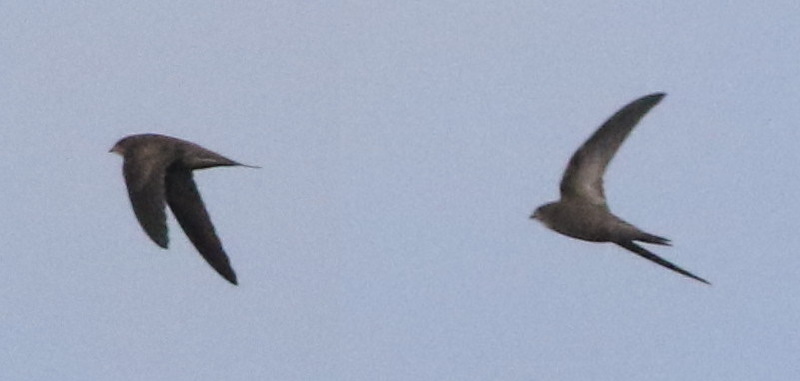
High pressure in the middle of Europe and low
pressure in the Atlantic near the end of the month created conditions
for a southerly air flow reaching all the way from northern Africa to
the UK, ideal for bringing Pallid Swifts to this country, and we saw
record numbers. 2018 was the previous record year when BBRC estimated
at least 21 different individuals were present, but 2022 was different
and we even had multiple sightings including four over Cromer
(Norfolk), four over Buckton (East Yorkshire) and three over Wakworth
(Northumberland). The total is likely to be at least 50 I would guess.
The first ever Pallid Swift for Cheshire and Wirral (and the Dee
Estuary) turned up over Hoylake on the 27th and, eventually, well seen.
Then on the very last day of the month one was present all day over the
same area and joined by a second during the afternoon!
October started a bit frustratingly with a possible
Little Shearwater (more properly Barolo Shearwater) flying past Hoylake
towards Hilbre. Knowing the observer that is almost certainly what it
was but views were too fleeting and distant to be able to give a
description.
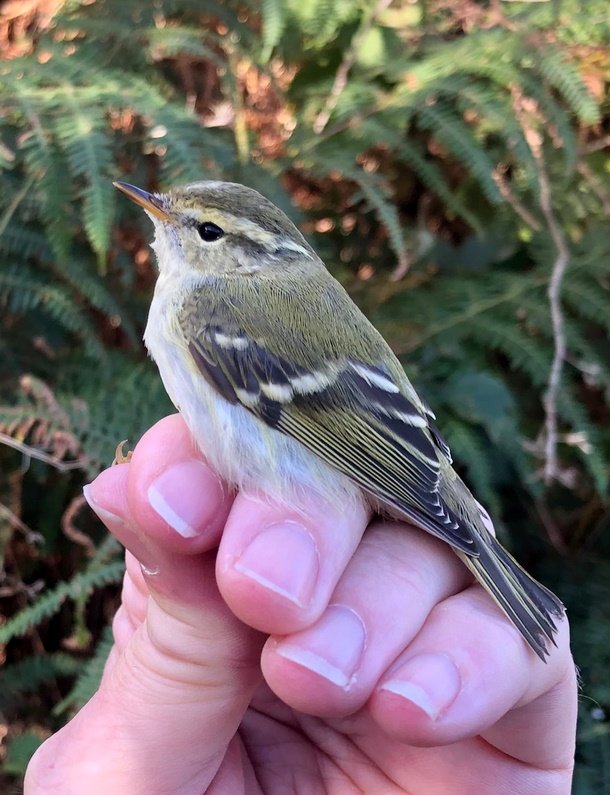
Yellow-browed Warbler is a species very much associated with October and 2022 was the second best ever year for them with 17 records (although several records were of a single long staying bird at Burton Mere Wetlands). If the weather hadn't deteriorated shortly after they first arrived I'm sure the total would have been a lot higher. 2016 saw the largest number with 35 records - see Yellow-browed Warbler Influx 2016. About the same time as we saw this year's Yellow-browed Warbler influx several Firecrests were spotted with a total of at least six.
Next to turn up was a Slavonian Grebe at Burton Mere Wetlands on the 8th. It then moved to Cop Hole on the edge of Burton Marsh (close to A548) but unfortunately it was found dead at the end of the month.
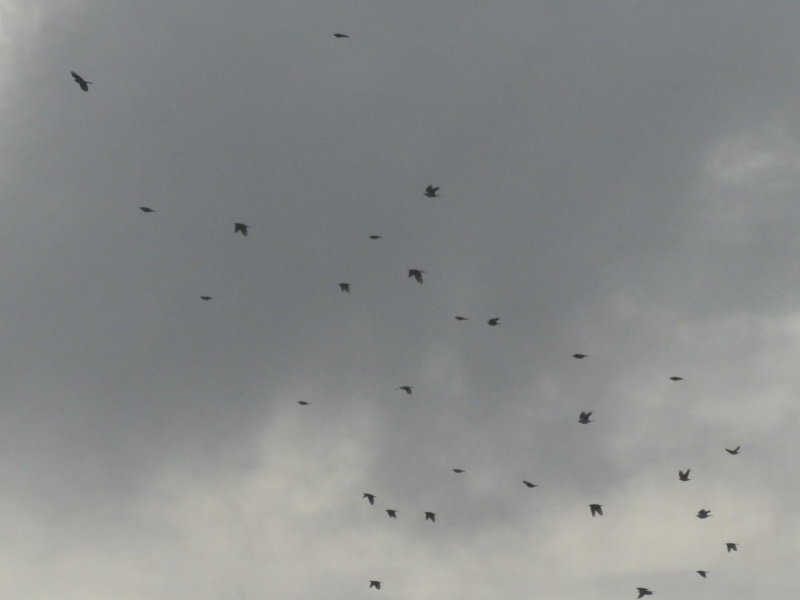
The 19th started overcast with quite a fresh
south-easterly breeze - a bit too strong for any decent visible
migration, I thought. But then I started getting texts and emails about
large numbers of Redwings on the move - 'Some superb vis mig at
Thurstaston this AM' 'Big Thrush flocks piling in at West Kirby!' 'It
really is quite something!!!!'. A visit down to Thurstaston confirmed
what was happening with big flock after big flock heading south-east
along the coast, mostly Redwings but also good numbers of Fieldfares.
But it wasn't until later in the afternoon that we realised just how
big the numbers were when we saw a count from Crosby Marine Park (by an
experienced migration counter) of an incredible 122,600 Redwing and
18,950 Fieldfare between 07.30 and 14.30 - all of which were headed
south straight towards Wirral! I'm going to be writing an article about
all this for the December Newsletter.
Another nice rarity was a Long-billed Dowitcher at Burton Mere Wetlands, seen on the 21st, 22nd and 29th. There was a massive count of Shelducks on Dawpool Bank with over 7,000 on the 9th. A Black Redstart was by the Lifeguard Station at Wallasey on the 17th and another on Hilbre on the 19th. So far we are a bit short on Short-eared Owl and Hen Harrier sightings but there have been plenty of Marsh Harriers around including at least 17 flying into the roost off Parkgate on the 26th.
A fabulous month!
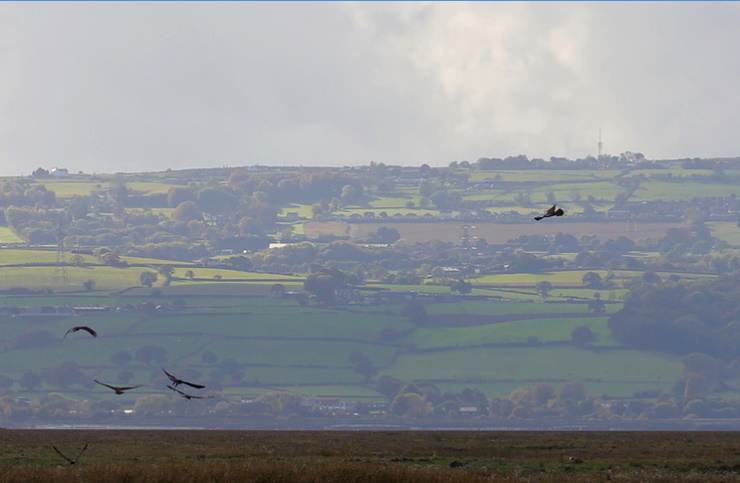
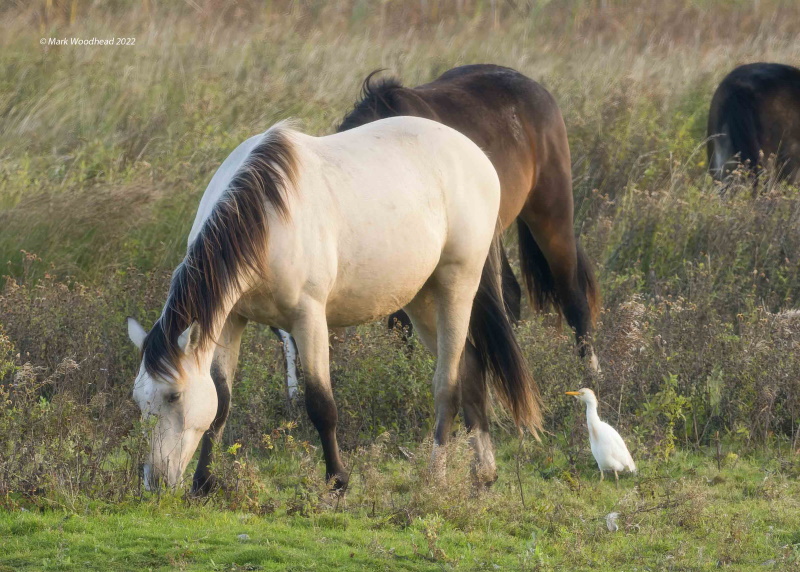
Up to five Cattle Egrets were present through the month
What to expect in November
Given the large influx into the country possibly
another Pallid Swift, over the years most have occurred in November in
the UK.
If we get a return to more normal winter weather then expect good
numbers of small waders to arrive, particularly Dunlin and Knot and
Dawpool Bank is likely to be covered in them at low tide. Brent geese
numbers were very high around Hilbre last November with some reports of
around 600. Early morning along the channel which goes inside the
islands seems to be the best place to see them, after which they
disperse. Colder weather should also bring in some Snow Buntings with
Point of Ayr and the north Wirral coast favourite spots for them.
On the marshes we hope Short-eared Owls return having been almost
totally absent so far this autumn. Look out for Hen Harriers including
the gorgeous
grey males. The Marsh Harriers are currently roosting in the reed bed
off the Old Baths at Parkgate and you could well see as many as 20
flying in to roost late afternoons. Also a Bittern or two may be
spotted flying
into the same roost.
Top of Page
Forthcoming Events
November Highest Spring Tides (Liverpool)
Also see Tides page.
25th November, 11.36hrs (GMT), 9.6m.
26th November, 12.21hrs (GMT), 9.6m.
Forthcoming Events
See events at https://events.rspb.org.uk/deeestuary